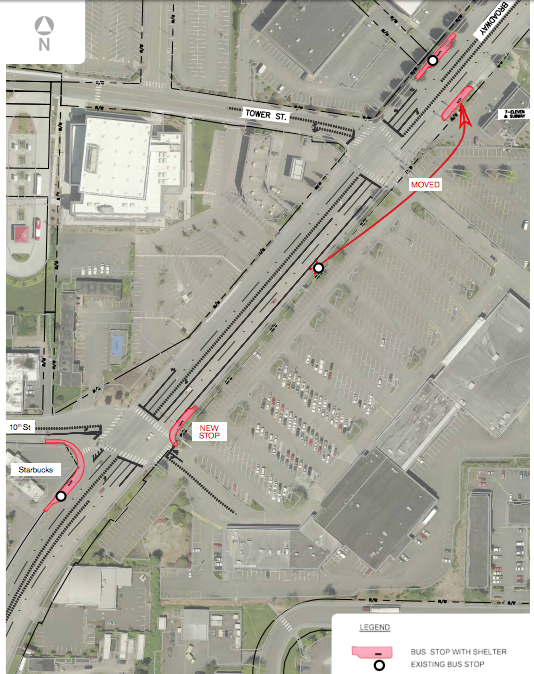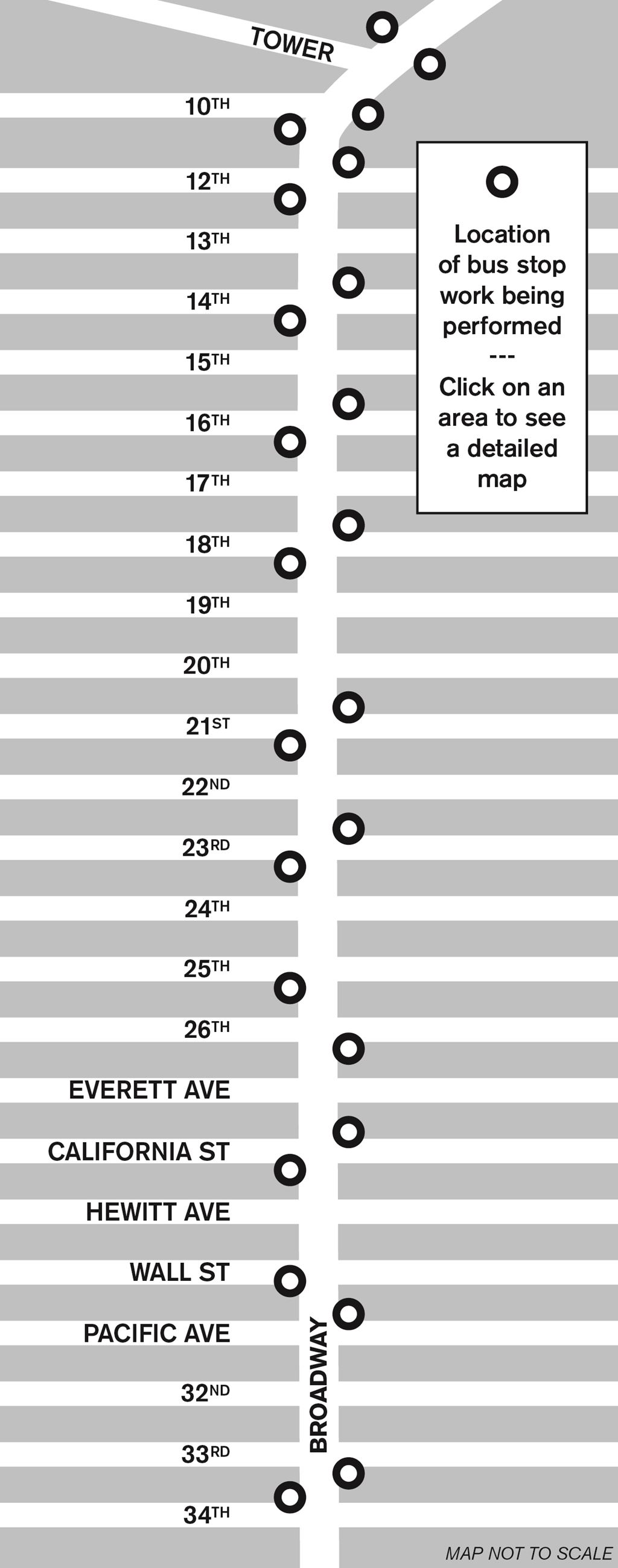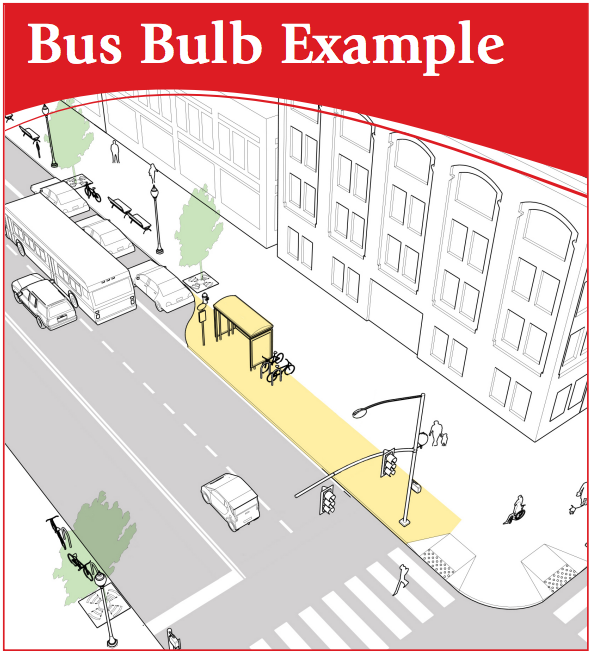Everett Transit is in the process of designing new transit improvements on Broadway to enhance local bus service. The proposal would establish new curb extensions and add, move, and close stops along the Broadway corridor stretching from Tower Street to 35th Street. In total, the proposal would close two stops, add four new stops, move eights stops, and construct 26 curb extensions (24 of which would be bus bulbs).

Most of the revised stop locations would be situated to optimize stop pairs in both directions on Broadway. The lion’s share of stops would also be located after intersections as opposed to before so as to reduce delays caused by runners at stoplights. A notable exception to this is the proposed northbound bus stop relocation from 34th Street to 33rd Street. The move would place the northbound bus stop just south of the 33rd Street intersection (it’s worth noting that most buses turn right at the light.) The primary reasons for this change appear to be two-fold:
- To match the very evident walking habits of pedestrians in the area (i.e., lots of east-west pedestrian circulation on 33rd Street, but almost none on east-west blocks south of there); and
- To reduce the instances of pedestrians crossing at a very dangerous unmarked crosswalk on 34th Street.
Curb extensions—or what Everett Transit is calling bus bulbs—are a major part of the proposal. Every stop on the corridor would receive a curb extension, often wrapping around full corners of the blocks. The bus bulb treatment will come with a standard package of stop signage, bike racks, trash bins, benches, and bus shelters. The benefits of the bus bulbs are numerous.

- Buses become more reliable since they don’t have to weave out and then back into traffic. Instead, buses stop in an existing lane of traffic while passengers hop on and off.
- With the elimination of weaving, bus operators are exposed to fewer traffic conflicts like collisions with motorists and bicyclists.
- Bus bulbs also typically reduce the length of the required bus zone by as much as half compared to bus pull-outs, meaning that space next to the curb can be put to other uses.
- For riders and pedestrians, bus bulbs mean more open area dedicated to sitting and standing while uncluttering the paths of sidewalks. Many of the bus bulbs will trim down the width of intersections allowing pedestrians to cross more easily and almost assuredly reducing the speeds of motorists on the street.
Ostensibly, the stop pair at 33rd Street/34th Street is not proposed to have bus shelters, despite having incredibly high ridership rates. That stop pair boasts strong all-day weekday ridership, particularly southbound with Sound Transit Expresses (ST 510, 512, and 532) and Community Transit regional service (CT 201 and 202) to points south of Everett, while Everett Transit provides all-day service everyday of the week with Route 8.
In response to a request for comment on the bus shelter issue, Everett Transit stated the following:
The stop at 34th, northbound, is primarily a drop-off zone. The next stop is Everett Station, and it is not very often that someone would wait for the bus at that location and pay the fare to only go to the station. So that location is not a prime location for a shelter.
The stop at 34th, southbound, is a bit tougher to assess. Due to proximity to Compass Health, and the fact that it seems patrons of Compass Health smoke outside the facility, the primary concern is that the shelter would potentially be used as smoking shelter (we’ve had other instances of this nature, and unfortunately we lack the resources to enforce non-smoking regulations).
Everett Transit says that have only had one request for a shelter at this stop in their outreach process so far. But the agency suggested that they would consider additional bus shelters if they receive more support for them at these stops. In absence of bus shelters, Everett Transit outlined a few options for riders: residents and employees near the stop could better time their walks to the stops so as to reduce wait times; or riders could skip the stop and walk the extra four blocks to the Everett Station transit center.
The outreach process is slated to wrap up at the end of summer and construction will begin mid-2017. Riders should see the fruits of the project roll out during the latter half of 2017.
If you wish to submit comments on the project proposal, contact Everett Transit’s project coordinator Vincent Bruscas.
Stephen is a professional urban planner in Puget Sound with a passion for sustainable, livable, and diverse cities. He is especially interested in how policies, regulations, and programs can promote positive outcomes for communities. With stints in great cities like Bellingham and Cork, Stephen currently lives in Seattle. He primarily covers land use and transportation issues and has been with The Urbanist since 2014.




